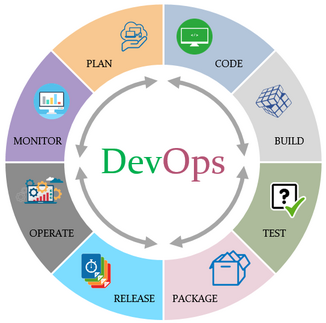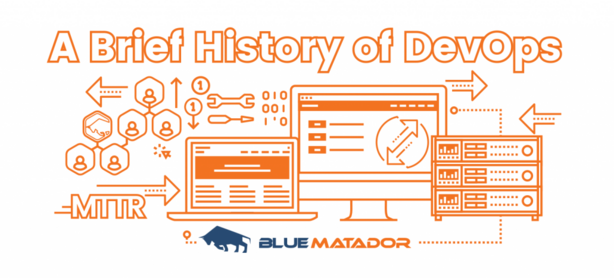Complete guide of DevOps certification courses, tutorials & training
What is DevOps?
DevOps is the combination of individuals, process and technology to provide value to customers continuously. DevOps enables formerly siloed roles—development, IT operations, quality engineering and security— to collaborate to provide better as well as more reliable products. By adopting a DevOps culture together with DevOps practices and tools, teams gain the flexibility to higher reply to customer requirements, increase confidence within the applications they build, as a result growth becomes speedy which leads to achieve business goals faster.

What is the history of DevOps?
If DevOps had a birth record, the father’s name would be penned in as Patrick Debois. Patrick was fascinated about learning IT from every viewpoint, and in 2007, he started functioning on an outsized data center migration where he was the supervisor of testing. Throughout this project, he got to know the annoyance experienced in projects like these comes from the constant shifting between the developing side of the matter and also the silo of operations on the opposite side of the fence. He recognized that plenty of your time and energy was wasted navigating the project between these two worlds, but the division between them seemed huge. Later, in 2008 in an Agile conference held in Toronto, Canada, Andrew Shafer tried to place together a meetup session entitled as “Agile Infrastructure.” When Patrick headed there for the session, he was the sole one there as nobody appeared. Andrew had received a lot of obstructive feedback from his posting that even he didn’t show up to one of his own sessions. However, Patrick was so excited to find out a person with similar thoughts who he chased him down at the conference and had that talk in the hallway only. They made a discussion group for people to post their ideas for the way to unravel this division between development and operations later that year. In June of 2009, John Allspaw and Paul Hammond gave a chat entitled “10+ Deploys a Day: Dev and Ops Cooperation at Flickr.” Patrick happened to watch the streaming video of that presentation at his place Belgium, and it instantly hit him. He understood that this was precisely the solution that he had been looking for. Emboldened by this presentation, he put out a call to own a gathering of developers and system administrators to induce together and discuss the most effective ways to start out bridging the gap between the two contrasting fields. He named the event DevOpsDays, occurring within the last days of October in 2009. This event gathered a good amount of attention from experts in both fields and stimulated lively debates over Twitter where the hashtag was soon shortened to easily DevOps. It was soon when a number of the smaller tech enterprises were attempting to place together DevOps practices still as tools built to assist these newly forming teams. DevOps had managed to attain a basic following that was setting out to put their ideas to use. Finally, in March of 2011, Cameron Haight of Gartner presented his predictions for the trajectory of DevOps over the subsequent few years. His positive outlook on its impact on the industry cause more attention for the DevOps movement, and it wasn’t long before enterprises of all sizes were commencing to adopt these new practices. DevOps had officially caught on because the next big thing since Agile for the IT industry.

How is DevOps different from traditional IT?
| Traditional IT | DevOps |
| After placing the order for brand new servers, the development team starts working on testing. The Operations team works on vast paperwork in enterprises to employ the infrastructure. | After placing an order for brand new servers Development and Operations team work together on the paperwork to establish the new servers. This leads to better range of vision for infrastructure requirement. |
| Before going live, the load testing mostly crashes the application. Theat leads to delay. | Before going live, the load testing makes the application a little bit slow. The development team fixes the bottlenecks quickly. The application is released just on time. |
| Operations team knows nothing about the progress of the Development team. Operations team comes up with a monitoring plan as per their understanding. | In here, the operations team completely knows about the progress of the developers. Operation team frequently interacts with developers and jointly come up with a monitoring plan that caters to the IT and business needs. Advance Application Performance Monitoring (APM) Tools are also used by them. |
What are the benefits of DevOps?
Teams that acquire DevOps practices, culture and tools become efficient, high-performing, produce better products faster and receive greater customer satisfaction. This improved association and productivity is also important to achieve business goals like below mentioned:
- Speeding up the time to market
- Adjusting to the market and competition
- Easier to find errors
- Maintaining system stability as well as reliability
- Boosting the mean time to recovery

What is DevOps Work Flow?
Continuous Integration- Continuous Integration (CI) is a standard development practice normally employed in the DevOps method stream. Engineers consistently combine their codes to transform into a yielded repository where those updates are executed. Continuous integration ensures the best, unique and approved code is in each case immediately available to engineers using it. CI stops pricey delays being made by allowing several designers to remove at a similar source code with conviction, as opposed to holding back to prepare separate sections of code during the identical time on the day of releasing. This practice is an important a part of the DevOps procedure stream, which intends to mix up speed and agility with quality and security consistently.
Continuous Delivery- Continuous Delivery (CD) is the next practical advance from CI. Code changes are therefore constructed, tested, and bundled for release into production. The goal is to send updates to customers briskly and inexpensively.
Continuous Deployment- For the qualified DevOps association, the step by step arrangement is also a more appropriate option over CD. Continuous sending is that the full exception of CD with no human (i.e., manual) interference needed. In an undisturbed company process, each approved change is directly sent to clients. This method removes the need for booked release days and speeds up the criticism circle.
Constant Monitoring & Feedback- At last, all within the development region, your group must have instructions founded for steady observation and analysis of each part and structure. Again, most of the checking procedures should be automated to supply ongoing feedback. This permits IT projects to separate issues and inform designers. Continuous feedback makes sure of higher safety and structure dependability even as more light-footed reactions when problems do appear.
What is the Roles, Responsibilities, and Skills of a DevOps Engineer?
Roles and responsibilities:
- Implementing various development, testing, automation tools, and IT infrastructure
- Setting up tools and required infrastructure
- Strive for continuous improvement and build continuous integration, continuous development, and constant deployment pipeline (CI/CD Pipeline)
- Understanding customer requirements
- Managing stakeholders and external interfaces
- Defining and setting development, test, release, update, and support processes
- Monitoring the processes during the entire lifecycle
- Identifying and deploying cybersecurity measures
- Coordination and communication within the team and with customers
Skills:
- Configuration and managing databases such as MySQL, Mongo
- Experience working on Linux based infrastructure
- Excellent understanding of Ruby, Python, Perl, and Java
- Working knowledge of various tools, open-source technologies, and cloud services
- Awareness of critical concepts in DevOps and Agile principles
- Excellent troubleshooting
How much does DevOps engineer make/salary?
The national average salary for Devops Engineer is ₹6,45,000 per year in India.

What is the future of DevOps?
In 2021, DevOps teams will still have way more say within the data strategy process, and it will lead to greater raise in the potency of workloads, correlating with a rise in cloud data management techniques.
What are the DevOps Training Certifications available?
- Docker Certified Associate.
- Certified Kubernetes Administrator.
- Microsoft Certified Azure DevOps Engineer Expert.
- AWS Certified DevOps Engineer.
- Google’s Professional Cloud DevOps Engineer.
- Hashicorp certified Terraform Associate DevOps.
How to learn DevOps?

- First you should learn a programming language.
- Understand Essential OS concepts.
- Learn Cloud classification.
- Understand security and networking.
- Learn about CI/CD Pipeline.
- Get to Know the DevOps Automation Tools.
- Look into Cloud Providers for better understanding.
- Establish DevOps Goals and Objectives.